Do you remember the days when writing a good blog post took at least 2-3 days? When you’d stare at a blank screen and try to muster up inspiration for your next social posts?
It’s mind-blowing how much content creation with AI has changed the game for content creators, bloggers, writers, marketers, freelancers, entrepreneurs, you name it.
Imagine being able to generate content ideas in seconds, automate tedious tasks, and connect with your audience on a deeper level—all while saving massive amounts of time and effort.
Using AI content creation tools can revolutionize the way you produce, optimize, and distribute content.
By automating repetitive tasks and providing data-driven insights, AI allows you to focus more on strategy and creativity.
Our top AI tools to create content include:
- Ahrefs: Keyword Research
- Perplexity: Writing Blog Posts
- Claude: Writing Emails and Social Content
- Surfer SEO: SEO Content Optimization
- Grammarly: Grammatical Accuracy and Clarity
Here’s a step-by-step guide on how to use AI tools in the content creation process.
Step 1: Ideation and Planning
Effective AI content creation begins with a well-thought-out ideation and planning process.
Using artificial intelligence during this stage can help you discover valuable insights, generate innovative ideas, and set a clear direction for your content strategy, ultimately leading to more engaging and impactful content.
Trend Analysis and Research
AI has transformed the way you can analyze trends and conduct research by quickly sifting through vast amounts of online data to give up-to-date insights into what people are talking about and sharing.
It can spot emerging topics and track which content is gaining traction across social media and other platforms, helping you understand what really resonates with your audience.
By looking at social media buzz, search trends, and content interactions, AI provides a clear picture of what’s capturing attention right now.
AI Content Creation Tools for Trend Analysis
- BuzzSumo: This platform helps you discover trending content and the influencers driving those trends. It provides real-time data on the most shared articles, videos, and social media posts, enabling you to understand what type of content is currently engaging audiences. BuzzSumo also allows you to track competitors and see what content is performing well for them, giving you insights into potential content gaps you can fill.
- Google Trends: Google Trends offers a wealth of information about search interest for specific keywords over time. It provides real-time data, geographical insights, related queries, and the ability to compare multiple keywords. This tool is particularly useful for understanding seasonal trends and regional variations in search behavior, which can help tailor your content to specific markets
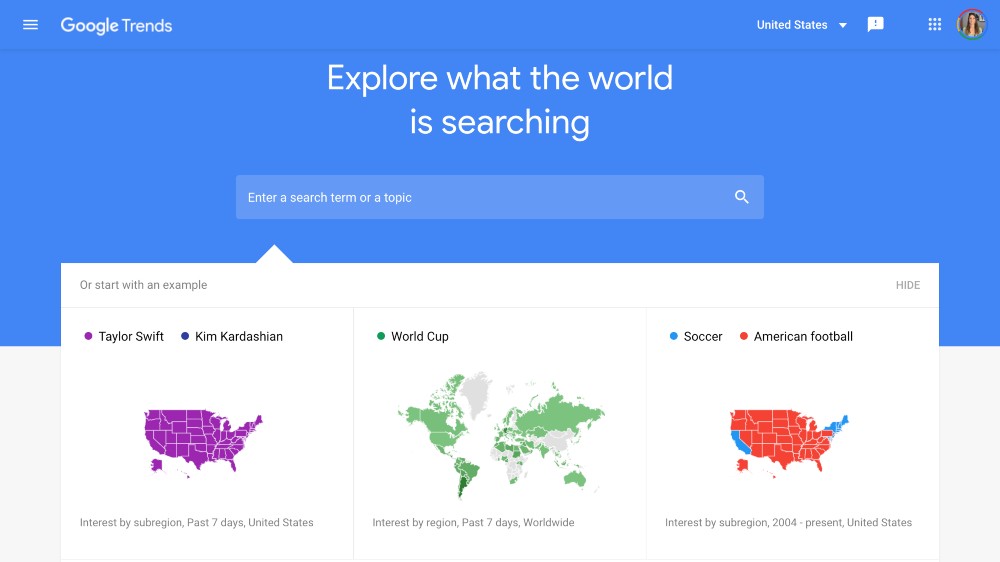
Keyword Research
AI-powered keyword research offers several key benefits that can significantly enhance your AI content creation strategy:
- Accurate Data: Artificial intelligence tools provide precise data on keyword performance, ensuring you target the most effective keywords for your content.
- Competitive Insights: Understand what keywords your competitors are ranking for and identify opportunities to outrank them.
- Content Optimization: Receive recommendations for optimizing your content to improve search engine rankings and drive more organic traffic.
AI Tools for Keyword Research
- Ahrefs: This tool provides comprehensive keyword data, including search volume, keyword difficulty, and click-through rates. Ahrefs also offers insights into competitor keywords and backlink profiles, helping you understand what keywords are driving traffic to competing sites.
- SEMrush: SEMrush offers a suite of tools for keyword research, including keyword difficulty analysis, search volume trends, and competitive analysis. It also provides recommendations for related keywords and content ideas, helping you build a robust SEO strategy.
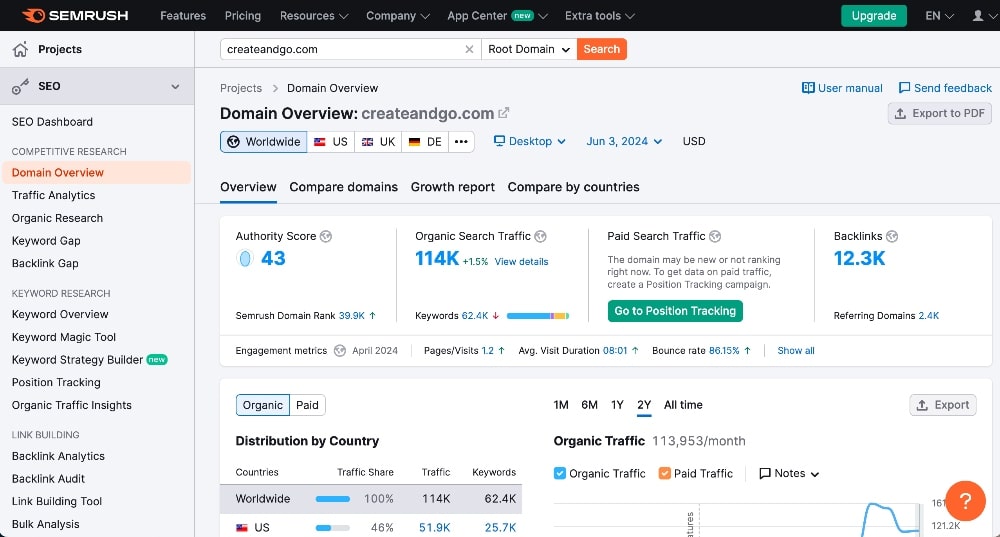
Content Calendar
AI can make managing your content calendar a breeze by analyzing when your audience is most active and engaged, helping you choose the best times to share your posts.
By understanding these patterns, you can schedule your content to reach more people and make a bigger impact.
Plus, AI can help you stay organized by keeping track of your ideas, prioritizing tasks, and sending you reminders so you never miss a deadline. This way, you can focus on creating great content while ensuring it’s consistently delivered and aligned with your overall goals.
AI Tools for Content Calendars
- CoSchedule: This tool uses AI to analyze your audience’s engagement patterns and suggest the best times to publish your content. CoSchedule also integrates with various social media platforms, allowing you to schedule posts and track performance from a single dashboard.
- Trello: Trello can be enhanced with AI plugins that help you organize your content calendar. These plugins can suggest deadlines, prioritize tasks, and provide reminders to keep your content production on track.
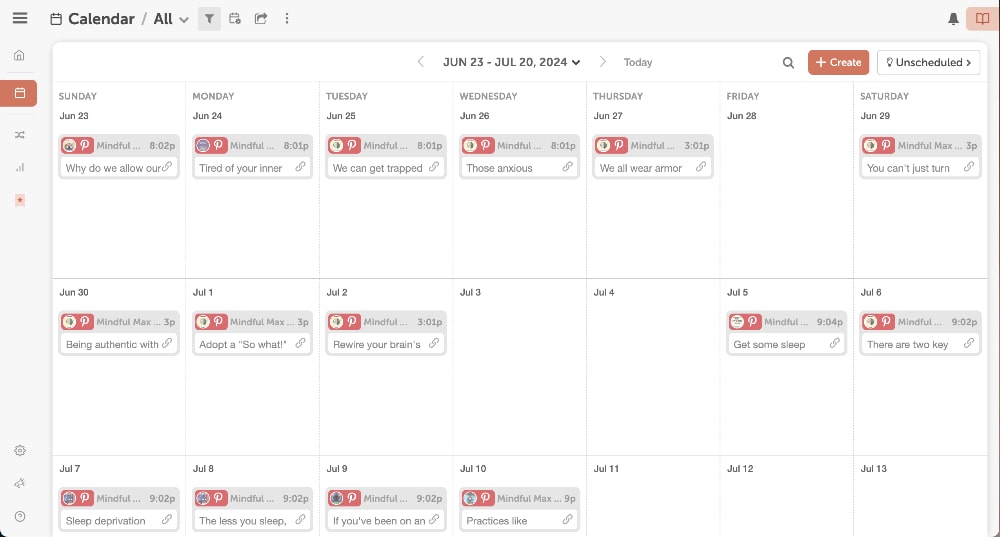
Step 2: Content Creation
With a solid foundation established through ideation and planning, it’s time to dive into the content creation phase. AI tools can significantly enhance your ability to produce high-quality, engaging content efficiently.
Here’s how AI can assist you in drafting, editing, and refining your content to ensure it resonates with your audience and meets your strategic goals.
Writing and Drafting
AI writing assistants have revolutionized content generation, allowing you to create a blog post and every social media update, email broadcast, or other marketing messaging you might possibly need — in minutes.
AI Content Creation Tools for Writing and Drafting:
- Jasper: This all-in-one AI content creation tool offers a suite of features for generating various types of content. One of Jasper’s standout features against its free competition is the many templates that you use with AI prompts to help you create exactly what you need.
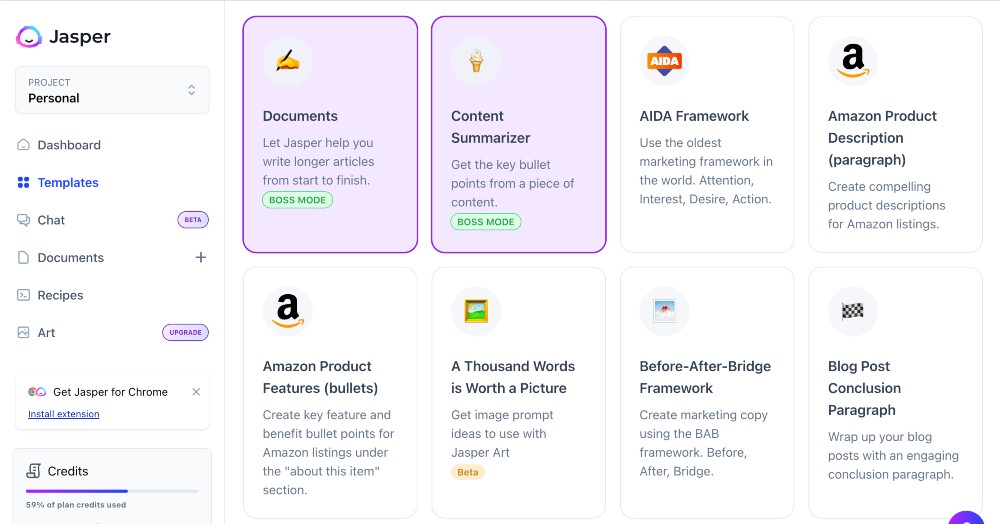
- Copy.ai: Specializing in AI copywriting, Copy.ai can help you generate everything from blog posts to social media updates and ad copy.
- ChatGPT: While not specifically designed for content creation, ChatGPT can be a powerful tool for generating ideas, outlines, and even full drafts based on your prompts.
- Perplexity AI: This AI tool excels in generating coherent and contextually relevant text based on user prompts. It can assist with everything from brainstorming ideas to drafting complete articles, making it a versatile companion for content creators looking to enhance their writing process. This is what we use to write our AI blog posts.
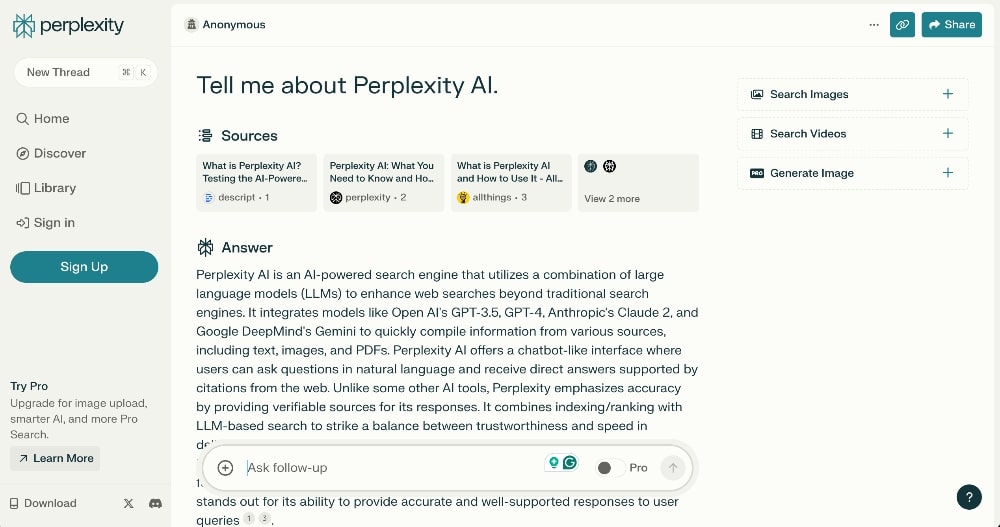
- Claude AI: Claude AI stands out for its ability to generate well-structured and concise content, making it ideal for producing long documents and articles. Claude is another great tool to use for writing a blog post. I find that it puts out consistently better AI-generated content than ChatGPT.
Visual Content
AI has also made significant strides in visual content creation, helping you produce eye-catching graphics, videos, and images that complement your written content.
It can suggest design elements, color schemes, and layouts that align with your brand and enhance your content’s visual appeal.
AI Tools for Visual Content:
- Canva: Canva’s AI features assist users in creating professional-quality designs quickly by suggesting design elements, color schemes, and layouts.
- DALL-E: This AI system can generate unique images from text descriptions, allowing you to create custom visuals that perfectly match your content.
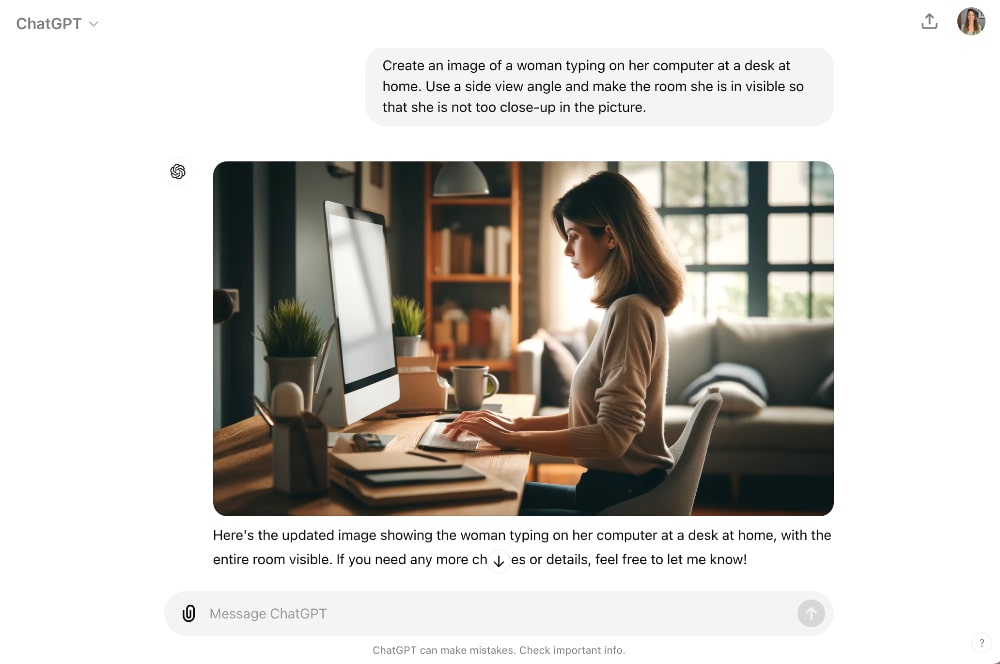
- Lumen5:An AI video creation tool that can transform your written content into engaging videos by automatically selecting relevant images, video clips, and music.
Step 3: Editing and Optimization
Once your initial draft is ready, the next crucial step is to use a content creation tool for editing and optimization. This ensures your content is polished, engaging, and optimized for search engines.
AI tools can significantly enhance this process by providing real-time feedback, suggesting improvements, and automating tedious tasks.
Grammar and Style Checks
AI can meticulously review your content for grammatical errors, spelling mistakes, and stylistic inconsistencies. These tools not only correct errors but also suggest improvements to enhance readability and engagement.
AI Content Creation Tools for Grammar and Style Checks:
- Grammarly: Grammarly uses advanced AI algorithms to check your content for grammar, punctuation, and style errors. It also offers suggestions to improve clarity, conciseness, and overall readability, ensuring your writing is polished and professional.

- ProWritingAid: This comprehensive writing assistant checks for grammar, style, and readability issues. It also offers in-depth reports on your writing, helping you identify patterns and areas for improvement.
- Hemingway App: The Hemingway App focuses on simplifying your writing by highlighting complex sentences, passive voice, and other readability issues. It provides actionable suggestions to make your content more accessible and engaging.
SEO Optimization
Optimizing your content for search engines is essential for driving organic traffic. AI tools can analyze your content against top-performing pages, providing recommendations to improve your SEO and boost your rankings.
AI Tools for SEO Optimization:
- SurferSEO: SurferSEO analyzes your content in real time, comparing it to top-ranking pages for your target keywords. It provides actionable recommendations for keyword usage, content structure, and on-page SEO elements, helping you create content that ranks higher in search results.
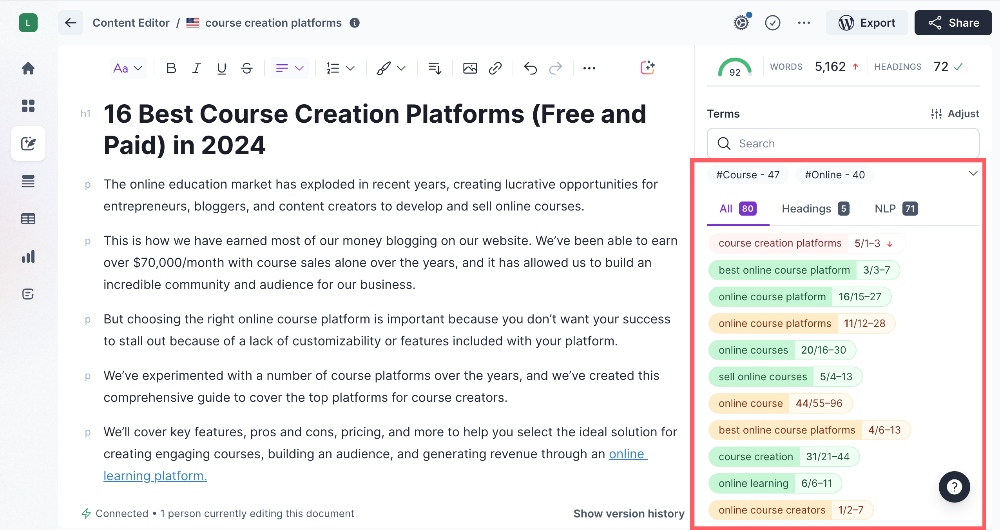
- MarketMuse: MarketMuse leverages AI to identify content gaps and opportunities within your niche. It provides detailed insights and recommendations to help you create more in-depth and authoritative content.
- Clearscope: Clearscope uses AI to analyze top-performing content for your target keywords and provides suggestions for related terms, content length, and readability. This ensures your content is comprehensive and optimized for search engines.
Read More: Our Full Review on Surfer SEO + Our Favorite SEO Tools for Driving Traffic
Content Enhancement
AI can suggest additional elements to enhance your content, making it more comprehensive and engaging.
This includes recommending relevant images, videos, infographics, and internal links.
AI Tools for Content Enhancement:
- Frase: Frase helps you research and outline your content by pulling relevant information from top-ranking articles on your chosen topic. It also provides AI-generated content briefs and suggestions for improving your content’s depth and relevance.
- Lumen5: Lumen5 transforms your written content into engaging videos by automatically selecting relevant images, video clips, and music. This helps you diversify your content formats and reach a wider audience.
- Canva: Canva’s AI features assist in creating visually appealing graphics and infographics that complement your written content. It suggests design elements, color schemes, and layouts to enhance your content’s visual appeal.

Step 4: Distribution and Scheduling
Once your content is polished and optimized, the next step is to ensure it reaches your target audience effectively. Distribution and scheduling are crucial for maximizing the impact of your content.
AI tools can streamline this process by analyzing audience behavior, automating posting schedules, and optimizing content delivery.
Social Media Scheduling
AI can analyze when your audience is most active on social media and suggest the best times to post your content. This ensures your posts reach the largest possible audience and achieve maximum engagement.
AI Tools for Social Media Scheduling:
- Buffer: Buffer uses AI to determine the optimal times to post on various social media platforms based on your audience’s activity patterns. It also provides analytics to track the performance of your posts and refine your social media strategy.
- Hootsuite: Hootsuite’s AI-powered scheduling features analyze your audience’s engagement data to recommend the best times for posting. It also allows you to manage and schedule posts across multiple social media accounts from a single dashboard.
- Sprout Social: Sprout Social uses AI to analyze engagement metrics and suggest the best times to publish your content. It also offers comprehensive analytics to measure the success of your social media campaigns.
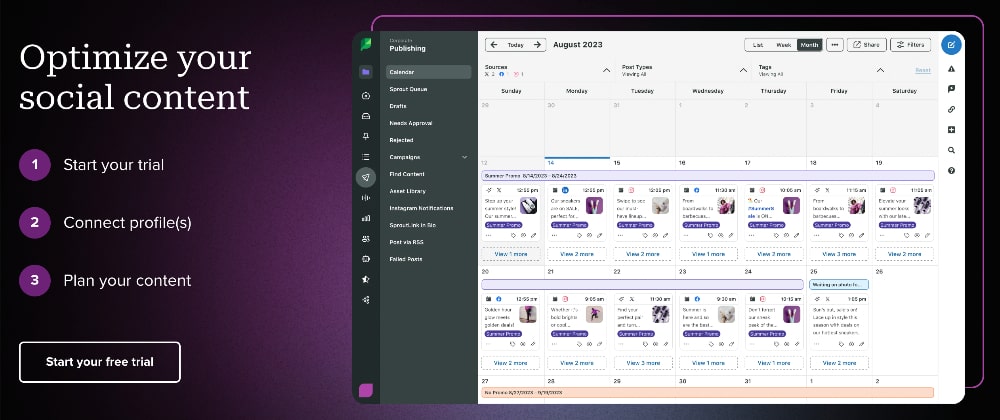
Email Marketing
AI can enhance your email marketing efforts by segmenting your email list based on user behavior and preferences. This allows you to send highly targeted and personalized email campaigns that drive higher engagement and conversion rates.
AI Tools for Email Marketing:
- Kit: Kit’s AI features help you segment your audience, personalize email content, and optimize send times. It also provides predictive analytics to improve your email marketing strategy and increase open rates.
- HubSpot: HubSpot uses AI to analyze user behavior and preferences, allowing you to create personalized email campaigns. It also offers automated workflows to streamline your email marketing efforts and improve efficiency.
- Brevo (formerly Sendinblue): Sendinblue’s AI tools help you segment your email list, personalize content, and optimize send times. It also provides detailed analytics to track the performance of your email campaigns and make data-driven improvements.
Content Repurposing
AI can analyze your existing content and suggest ways to repurpose it for different platforms. This extends the reach and lifespan of your content, ensuring it reaches a broader audience.
AI Tools for Content Repurposing:
- Lumen5: Lumen5 can transform your blog posts and articles into engaging videos, making it easy to share your content on video platforms and social media.

- Canva: Canva’s AI features help you create visually appealing graphics and infographics from your written content. This allows you to repurpose your content for social media, presentations, and more.
- ContentBot: ContentBot uses AI to generate new content ideas and repurpose existing content for different formats and platforms. It can help you create social media posts, email newsletters, and more from your original content.
Step 5: Performance Analysis and Iteration
The final step in the AI content creation process is performance analysis and iteration. This crucial phase allows you to measure the impact of your content, gain insights into audience behavior, and continuously refine your strategy.
By leveraging AI tools for data analysis, you can make data-driven decisions to improve your content’s performance and achieve better results over time.
Analytics and Insights
AI-powered analytics tools can provide deep insights into how your content is performing across various channels. These tools go beyond basic metrics to offer predictive analytics and actionable recommendations.
AI Content Creation Tools for Analytics and Insights:
- Google Analytics: Google Analytics uses machine learning to provide advanced insights into user behavior, content performance, and conversion paths. Its AI-powered features, like Automated Insights, can uncover patterns and anomalies in your data that you might otherwise miss.
- Adobe Analytics: This tool uses AI to provide predictive analytics, anomaly detection, and contribution analysis. It can help you understand complex user journeys and identify opportunities for optimization.
- Mixpanel: Mixpanel’s AI-powered analytics platform offers advanced user behavior analysis and predictive modeling. It can help you identify which content resonates most with your audience and predict future trends.
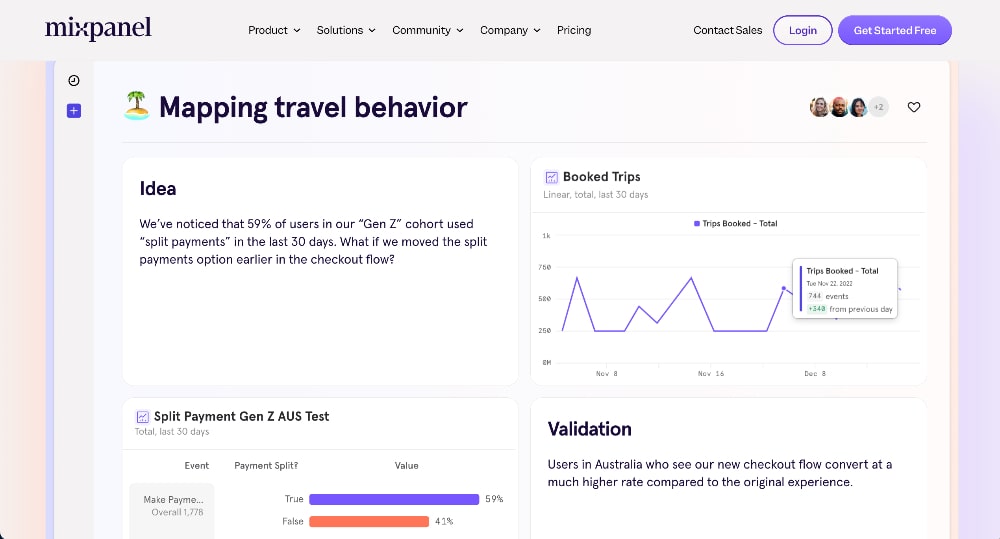
A/B Testing
AI can automate and enhance your A/B testing efforts, allowing you to optimize various elements of your content for better performance.
AI Tools for A/B Testing:
- Optimizely: Optimizely uses machine learning algorithms to power its A/B testing and personalization features. It can automatically allocate traffic to the best-performing variations and suggest new test ideas based on your results.

- VWO (Visual Website Optimizer): VWO’s AI-powered platform helps you run A/B tests on your content, providing statistical significance calculations and personalized recommendations for improvement.
- Dynamic Yield: This AI-driven personalization platform allows you to test and optimize various elements of your content, from headlines to images, across different channels.
Sentiment Analysis
AI-powered sentiment analysis tools can help you understand how your audience is reacting to your content emotionally, providing valuable insights for future content creation.
AI Tools for Sentiment Analysis:
- Brandwatch: Brandwatch uses AI to analyze social media mentions, comments, and reviews, providing insights into audience sentiment and emerging trends.
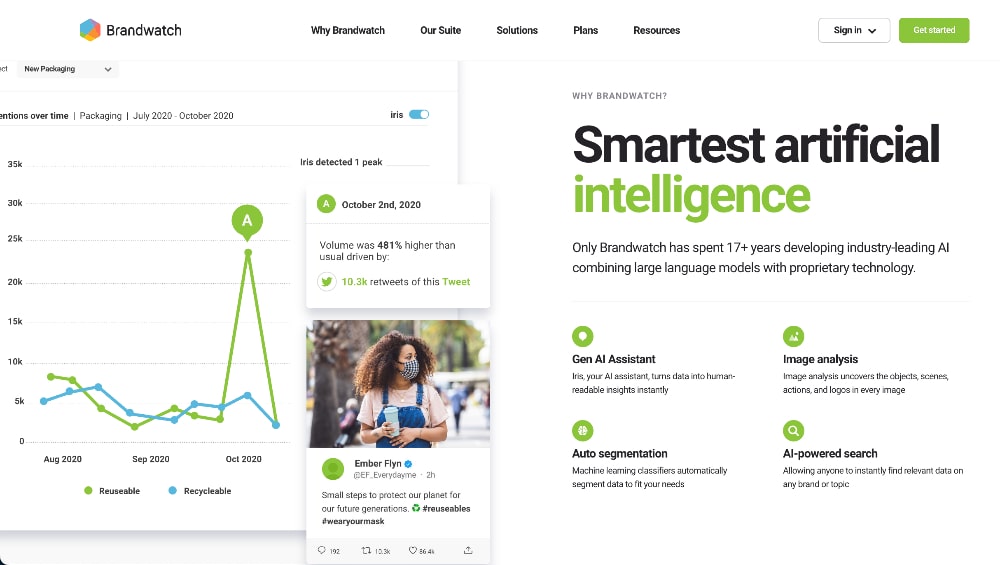
- IBM Watson Natural Language Understanding: This powerful AI tool can analyze text content for sentiment, emotion, and key concepts, helping you understand how your audience perceives your content.
- Medallia: Medallia offers customizable AI models for sentiment analysis, allowing you to tailor the analysis to your specific industry or audience.
Content Performance Prediction
AI can help predict how well your content will perform before you even publish it, allowing you to make data-driven decisions about what to create and how to optimize it.
AI Tools for Content Performance Prediction:
- BrightEdge: BrightEdge’s AI-powered platform can predict the potential performance of your content based on various factors, including search trends and competitor analysis.
- Crayon: Crayon uses AI to analyze market trends and competitor strategies, helping you predict which types of content are likely to perform well in your industry.
- MarketMuse: MarketMuse’s AI can predict how well your content will perform in search results and suggest improvements to boost its potential performance.
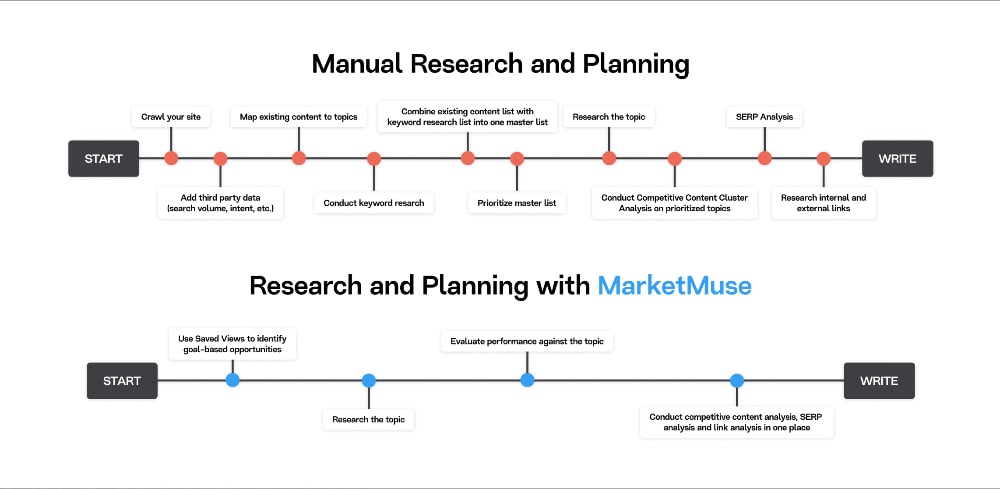
FAQs on AI Content Creation
Conclusion
Using AI for content creation can be truly life-changing. You can streamline everything from brainstorming ideas to editing and content marketing, making your workflow more efficient and effective.
These tools can help you stay on top of trends, optimize your content for search engines, and even automate your social media posts, allowing you to focus more on what you love—telling stories and connecting with your audience.
However, it’s important to remember that AI is here to assist, not replace. The unique creativity and insight that you bring to your work are irreplaceable. Think of AI as your helpful partner, handling repetitive tasks and providing valuable insights, so you can dedicate more time to crafting engaging narratives and building relationships with your audience.
In the very least, make sure you are using AI writing tools such as Perplexity, Claude, or CopyAI to write better, faster. You can slowly incorporate other tools into your content strategy as you start streamlining.